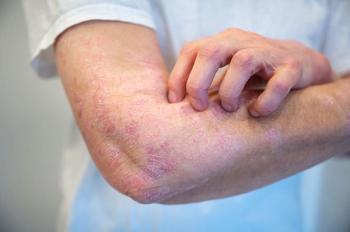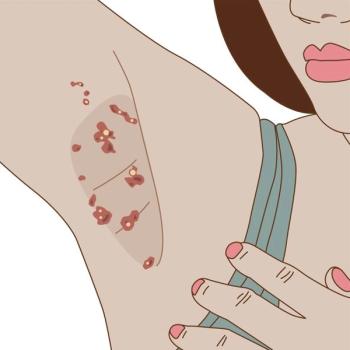
Bullous Impetigo on Buttocks of a 3-Year-Old Girl
The numerous superficial, rounded, red-based ulcerations on the left buttock of a 3-year-old girl are characteristic of bullous impetigo. The varnish-like crust on the largest lesion is also typical of this skin infection.
The numerous superficial, rounded, red-based ulcerations on the left buttock of a 3-year-old girl are characteristic of bullous impetigo. The varnish-like crust on the largest lesion is also typical of this skin infection.
A culture of material from one of the several vesicles containing purulent fluid grew Staphylococcus aureus, catalase-positive. S aureus is the primary pathogen in both bullous and nonbullous impetigo. The staphylococcal epidermolytic toxin causes intraepidermal cleavage below or within the stratum granulosum to produce the typical lesion. The vesicles enlarge into bullae, which rupture and may form the tinea-like scale that is seen in several lesions.
This condition usually affects exposed areas; this child's infection may have begun with a bite or a scratch on the buttock. She was treated with oral cephalexin and topical mupirocin ointment. The bullous impetigo resolved rapidly.
Newsletter
Enhance your clinical practice with the Patient Care newsletter, offering the latest evidence-based guidelines, diagnostic insights, and treatment strategies for primary care physicians.


















































































































































































































































































